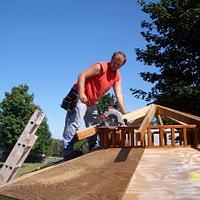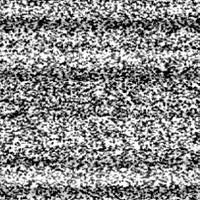
MontyJ
in over 11 years
Stupid question of the week
I work out of town a lot, as I am this week, and spend a lot of time wandering around aimlessly during my off time instead of hanging out in a motel room. Yesterday I was roaming the toy department at Lowes and came across a set of twist lock router bushings. Looking them over made me wonder something. If you use a bushing, does that mean the shank of the bit won’t be seated as deep into the collet? After recent…episodes shall we call it…with the router, that concerns me a bit. I can definitely see the advantage of being able to use a bushing, and wish I had known about them sooner, but am I correct? The bit wont be into the router as far?
Where are the band-aids?---Pro Libertate!
16 Replies
MontyJ:
It’s an excellent ‘stupid’ question – as it deals directly with 1) Safety, and 2) an inquiring mind – they are a terrible thing to waste; as there seem to be progressively few these days…
First, it’s paramount that any bit be firmly seated in the collet – all sorts of nasty things happen – there is no upside potential. Normally, I remove the collect split-nut from its retainer, then firmly seat the bit at the bottom: you can do this by simply setting the collet down on a table-top, and pushing the bit-shank down into the split-nut. My routers – PC892 & Bosch MRC23EVS – have ample room remaining between the bit-bottom and the router shaft – sometimes you do need to be concerned with bottoming-out the bit to the router shaft.
To your question, if you fully-seat the bit, add the length of the bushing collar, do you run out of cutter? Sometimes… as bits are only so long. You can ‘safely’ cheat-up the bit about a 1/4" (members, pleases jump-in here), but I wouldn’t go more than that.
My safety zone is fully-seated, and if the bit isn’t long enough (w/collar attached), I buy a new router bit that works within project requirements. Do Not take shortcuts on safety…
MJCD
In my experience, the bit should not be fully seated in the collet but should be about 1/4" from the bottom. The taper of the collet and the collet seat work together to grip the shank of the bit. Personally, I consider half the length of the shaft to be the safe zone.
Bushings are an excellent way to expand the versatility of a router. Using templates, you can really make the tool rock. By design, the bushing will limit the depth of cut slightly but if you need a deeper cut there are methods to fix that.
Certainly not a stupid question. Routers are one of the most under-utilized tools in the shop.
Artisan Woodworks of Texas- www.awwtx.com
Bill, I understand the danger if the bit isn’t in far enough. What’s the problem with it being in too far ? Why not put it in all the way ?
I really do appreciate the answers guys, but I’m not understanding it. Look at this link. Ignore everything but the picture. Notice how the bushing extends below the router base? If I put a bit through that bushing, I loose that amount of bit shank in the collet, correct?
Where are the band-aids?---Pro Libertate!
If the router is not designed for a fully-seated bit, the bit will seat against the shaft before the collet split-nut tries to squeeze it down (my understanding is that the collect pulls the bit in abit, as it closes around it). What results is that the collet is pulling bit against a steel shaft – this is the limit of my knowledge.
I’ve been using Sommerfeld’s rubber grommets in my routers for years – these rest on the motor-shaft end, and have the effect of prohibiting the metal-to-metal contact (there are other benefits, as well). As such, in my routers, I always have pliable rubber between my fully-seated bit and the motor shaft.
MJCD
Honestly, I’m going on what I was taught years ago. From what I understand, the design of router collets and drill chucks rely in part on pressure created by the taper at their base. By raising the bit up, maximum pressure is exerted on the entire bit shaft. For drill bits this keeps the bit from twisting, and for router bits this keeps the bit from slipping. From an experience standpoint, I’ve seen bits slip when an overly aggressive cut is taken if the bit isn’t seated properly.
Artisan Woodworks of Texas- www.awwtx.com
MontyJ:
Depends on how you look at it.
The bit will cut to the depth it extends past the router base. However, you can’t cut against the wood (the bushing is in the way (this is the purpose of the bushing). To achieve a full-depth cut, you would have to cut down, into the wood first. One way to achieve this is to use a removable fixture (the bushing would push against the fixture, and cut partially into the work; upon removing the fixture, you would then be starting lower in the cut – thereby making a full-depth cut: this is abit hard to express in words.
MJCD
OK, now I understand your question.
Yes, you will lose some depth of cut using a bushing because it is designed to follow a template. The template must be at least as thick as the bushing and I believe the minimum thickness is generally 1/4".
That being said, there are ways to go from template/bushing to pattern bits that will allow for greater depth of cut.
Clear as mud?
Artisan Woodworks of Texas- www.awwtx.com
Maybe I’m using the wrong words here. On my router there is a lock-nut that I loosen and tighten to insert or remove a bit. In the center of that lock-nut is a hole that I stick the shank of the bit into. I stick the shank of the bit into the hole and tighten the lock-nut.
Now, suppose I have a bit that cuts 1/2" deep, but I only want it to cut 1/4"…fine I use a 1/4" bushing to prevent the bit from cutting the entire 1/2". I understand that. But when I loosen the lock-nut and stick the bit shank down into the hole, it’s not going to go down into the router as far because of the bushing.
Where are the band-aids?---Pro Libertate!
The depth of cut has nothing to do with the bushing as you describe it. The bit will be centered in the bushing, so the bushing acts like a bearing to guide the bit. The depth of cut is still controlled by the router motor/base.
Bushings allow you to use templates to guide the cut. For example, letter templates are used with bushings to make signs. The bushing controls the design, not the depth.
Artisan Woodworks of Texas- www.awwtx.com
OK, so if I understand it correctly, the bit resides inside the bushing, at least part way. In other words, part of the cutting head could be inside the bushing for shallower cuts. So basically, a bushing would be used with a straight bit to follow a template while cutting a certain depth. It wouldn’t be used with a bit that is wider than the bushing to control the depth of cut…so it’s basically like a flush trim bit in reverse.
Where are the band-aids?---Pro Libertate!
Monty,
I use a bushing with my dovetail bit and, yes, it does require that the bit is not seated as deeply. The bushing diameter is smaller than the smallest diameter of the dovetail bit so the cutting edge must extend beyond the bushing. If you will be using a router bit specifically with a bushing, then try to purchase a bit with a longer shaft.
I prefer a straight bit with ball bearing (same diameter) when pattern routing or flush trimming. When using a bushing for pattern routing or flush trimming, you either need to compensate for the difference in diameter of the bit vs. the bearing or, if you use the same diameter bit and bushing, extend the bit beyond the bushing.
L/W
“Those who would give up essential Liberty, to purchase a little temporary Safety, deserve neither Liberty nor Safety.” Benjamin Franklin
The loss of depth of cut is dictated by the thickness of the template. The template has to be thick enough for the bushing. In my experience, expensive router bits, made by companies that specialise in routing, have longer shanks than the bargain basement router bits. Those manufacturers know that their bits might be used in a router table or with bushings and add the extra length as a matter of course.
Yonak, you can put the router bit all the way into the collet if you like, but you will have a devil of a job trying the remove it afterwards. Always better to leave a a gap at the bottom.
MJCD, I’m confused, do you not have any depth adjustment on your router? Excuse my ignorance, I have only ever used plunge routers.
Rennners:
My lack of communication skills is genetic – try as I often do to both hide and overcome it. I decided to not continue to respond; as this thread is in good hands with the others responding.
MJCD
Thanks for your response, Rennners. I find that there are some bits whose shanks fit so tight I have a hard time removing them from the collet no matter how deep they are set. In cases like that, I put the collet in a vice and tap them out. Other bits fit such that they can be removed easily, again, depth of set notwithstanding
Also, as an aside, I don’t know if it’s the case with other brand routers but with Porter Cable routers sometimes, when trying to remove the bit, there is a point of loosening the collet nut that you have to go past in order to break the clamp pressure or some such other thing. I learned that trick the hard way, after ruining a router bit trying to remove it one time when I didn’t loosten the nut enough even though the nut seemed loose.
“I use a bushing with my dovetail bit and, yes, it does require that the bit is not seated as deeply.”—-lightweightladylefty
That’s what I was wondering. Thank you Ladylefty. And thanks to all who contributed. Seems I have a lot to learn about bushings so maybe I’ll buy a set and experiment.
Yonak, my Craftsman is similar to the way you describe the Porter Cable. When loosening the collet nut there is a second point where it is very snug again. I have to loosen it beyond that point before the bit will come out.
Where are the band-aids?---Pro Libertate!











